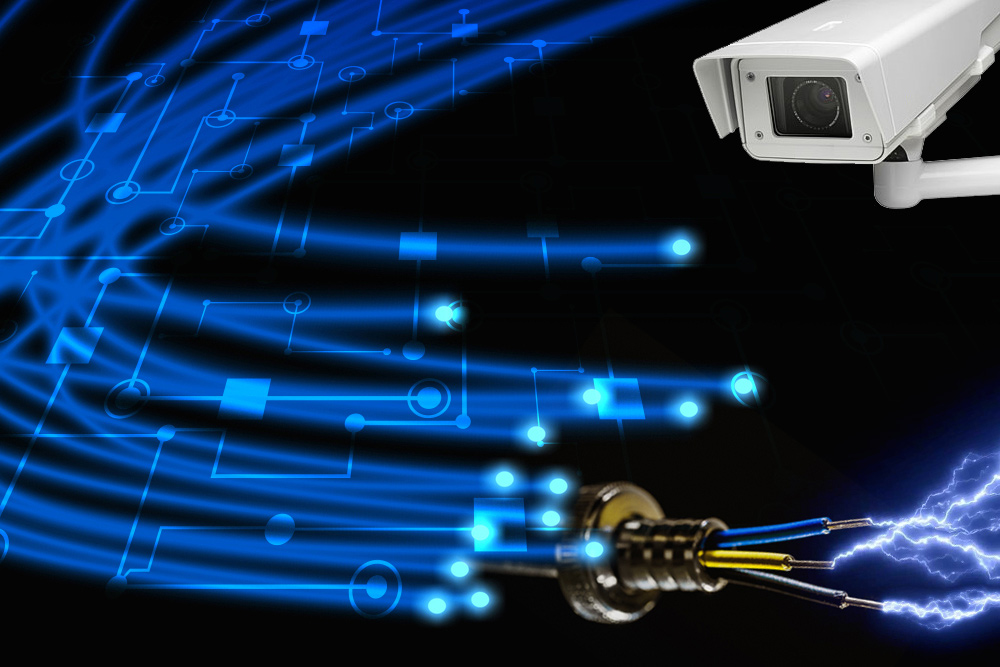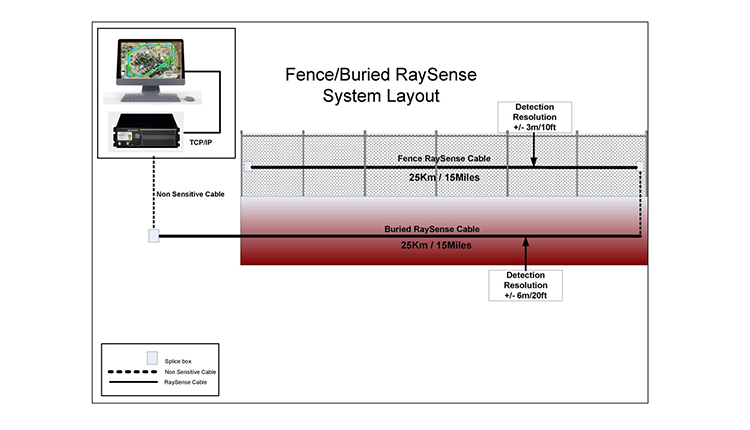Why Fiber Optic Protection Solutions Are the Future of Security
The shift to fiber optic safety and security systems notes a considerable innovation in the world of security, driven by their remarkable data transmission capabilities and durability to exterior interferences. These systems not only promote faster and much more reputable interaction but also offer an economical solution with decreased maintenance demands. As the landscape of safety develops together with emerging innovations such as AI and IoT, the possibility for optical fiber to enhance and redefine safety facilities becomes increasingly apparent. The implications of these developments increase important concerns about the future of protection steps and their effectiveness in an ever-changing atmosphere.
Benefits of Fiber Optic Systems
One of the primary advantages of fiber optic systems is their premium data transfer capacity, which assists in the transmission of huge volumes of information over fars away without significant loss. This characteristic is especially useful for security applications that require the continual monitoring and transfer of high-definition video clip feeds, sensing unit information, and other vital info. Optical fiber can accommodate the growing demands of contemporary safety systems, making certain that information stays intact and reputable.
In addition, fiber optic cables are less prone to electro-magnetic disturbance, which can be a substantial concern in settings with various digital tools. This resistance boosts the stability of the data being transmitted, consequently reducing the risk of data violations or system failures. Additionally, fiber optic systems are inherently extra safe than standard copper cable televisions, as tapping into a fiber optic line without discovery is exceptionally tough.
The sturdiness of fiber optic cables likewise adds to their charm. They are immune to environmental variables such as wetness and temperature fluctuations, decreasing maintenance prices and increasing system long life. Overall, these benefits setting fiber optic systems as a robust and effective selection for modern-day safety and security infrastructures, making sure trusted and safe and secure data transmission.
Enhanced Information Transmission Rate

The ability to transfer vast amounts of information rapidly assists in the smooth assimilation of high-definition video clip feeds and advanced analytics. Safety and security systems can currently process and evaluate information in real-time, improving response times and situational recognition. Furthermore, fiber optic connections support longer transmission distances without destruction of signal top quality, making them ideal for extensive safety and security networks.
The increased rate of fiber optic systems not just improves the performance of safety procedures but likewise lowers latency. This is particularly essential in vital circumstances where prompt decision-making can avoid protection breaches or reduce prospective risks. As companies remain to focus on security and efficiency, the need for fast and trustworthy data transmission will definitely solidify fiber optic systems as a keystone of modern-day security facilities.
Resistance to Interference
Fiber optic security systems regularly demonstrate phenomenal resistance to electro-magnetic disturbance, a vital advantage in atmospheres susceptible to electronic sound. Unlike typical copper cables, which can be adversely impacted by electromagnetic areas, radio regularity interference, and other kinds of electrical disturbance, fiber optic cable televisions utilize light to send information. This inherent home ensures that the signals remain clear and unaltered, no matter of surrounding electronic task.
Making use of glass or plastic fibers in fiber optic modern technology develops a barrier versus disturbance, permitting for trustworthy data transmission even in tough situations such as commercial centers, city areas with high digital website traffic, or areas near radio towers. This characteristic dramatically reduces the chance of signal deterioration or loss, making fiber optic systems especially appropriate for protection applications where stability and precision of data are extremely important.
In addition, this resistance to interference boosts the total performance and dependability of safety and security systems, making sure that tracking and sharp systems work flawlessly. In a world where security is progressively endangered by sophisticated modern technologies, the strength of fiber optic systems attracts attention as an essential attribute, strengthening their condition as an essential element of modern security infrastructure.
Cost-Effectiveness With Time
Significant price financial savings can be attained over time my response with the implementation of fiber optic safety and security systems. While the first investment might appear greater compared to standard copper-based systems, the lasting monetary advantages emerge through lowered functional and maintenance prices (fiber security). Fiber optic wires are naturally extra resilient and less at risk to environmental factors, which translates to decrease substitute and fixing expenditures over their life-span
Additionally, fiber optic systems need less power to run, which further reduces power costs. Improved data transmission capabilities enable fewer repeaters and amplifiers, minimizing equipment investment and simplifying installation processes. The scalability of these systems likewise adds to cost-effectiveness, as companies can broaden their safety and security framework without incurring significant extra expenditures.
An additional variable to consider is the boosted effectiveness in monitoring and action abilities that fiber optics offer. Enhanced real-time information transmission can cause quicker occurrence feedback times, possibly mitigating losses and responsibilities associated with safety see page breaches. Altogether, the long-term benefits of fiber optic security systems not only validate the initial expenditure however additionally position them as an economically prudent choice for companies looking for robust defense solutions.

Future Advancements in Protection
Progressing technologies are established to change security systems, integrating man-made intelligence (AI) and equipment learning to boost hazard discovery and feedback capacities. These innovations will enable safety systems to assess vast amounts of data in real-time, identifying patterns and anomalies that show possible hazards. This proactive strategy will allow quicker decision-making and extra efficient occurrence feedbacks.
In addition, the consolidation of the Net of Points (IoT) is leading the means for interconnected security devices, offering comprehensive surveillance and surveillance. Smart sensing units can relay info regarding ecological adjustments, while automated signals can inform protection workers right away of questionable tasks.
Furthermore, the development of biometric modern technologies will even more strengthen security mechanisms. Face acknowledgment, finger print scanning, and retina identification are coming to be a lot more innovative, providing layers of verification that are challenging to bypass.
Conclusion
In verdict, fiber optic security systems represent a considerable improvement in defense modern technology, using exceptional information transmission speed, click here for info resistance to electro-magnetic disturbance, and long-term cost-effectiveness. As the need for sophisticated security remedies proceeds to grow, the combination of optical fiber with emerging modern technologies such as AI, IoT, and biometrics will certainly even more enhance protection facilities (fiber security). The mix of these developments will certainly make sure an extra safe and receptive atmosphere, solidifying optical fiber as a cornerstone of future protection systems